WHY HEMP?
Simply stated, Hemp is the longest, strongest most durable natural fibre known to mankind and has been used for over 12000 years.
Hemp can be grown in 2 months, does not require herbicides or pesticides, and uses a fraction of water compared to cotton.
Hemp can produce 4 times as much pulp per hectare than trees and can produce over 50000 products including paper, plastics, cosmetics, clothing, food, fuel, wood products and medicine.
Using Hemp helps create new age environmentally friendly industries and solves the deadlock between ecology and economics.
This planet needs Hemp.
Today, our planet is in grave danger. Her forests are quickly vanishing, her waters are polluted and her rain full of acid. She is overpopulated and her ozone layer is thinning quickly.
Scientists are giving ominous warnings of expanding deserts, rising seas and evaporating lakes if the unbalancing effects of pollution continue. If hemp is not taken seriously by our world governments as a saviour to the environment we may just suffocate in our own waste.
Hemp has been regarded as the most versatile and valuable natural resource avaliable. It contains the longest and strongest fibres in the plant kingdom, grows more in a single season and has the capacity of producing more biomass than any other plant known to man. It is the oldest cultivated crop and can produce anything from paper to fuel.
In order to reverse the Greenhouse Effect, we need to stop cutting down trees and using fossil fuel. It could replace most fibre now in use in clothing manufacture, could meet all the world's energy needs, reduce pollution and even aid in the control of soil erosion and salinity, as its large tap root helps improve soil structure.
Hemp is a very effecient resource. One acre of land can produce the same amount of paper as can be derived from the destruction of 4.1 acres of forest. Coupled with this, hemp is a renewable crop that is harvested ecery three to four months - compare this to a forest, which takes decades to regenerate. As an added bonus, hemp also requires far fewer chemicals during both cultivation and paper processing than wood pulp.
"Australia would save more than $1.5 billion annually in the replacement of wood pulp [with hemp] for paper production."
Throughout history, hemp fibres have been used for paper as they provide a stronger, better quality product than that made from wood pulp. Paper made from wood pulp lasts around 75 years, whereas hemp paper may have a shelf life of up to 1,500 years.
Many people are surprised to find that they may already own literature printed on hemp paper. Family heirlooms, such as Bibles and encyclopedias would most likely be made from hemp, as between 75 to 90 per cent of all paper in the world was made from hemp fibre until 1883.
Until the 20th century, 80 per cent of all the world's textiles and fabrics, including the finest quality linen were made from hemp. Hemp is softer, warmer, more water absorbent, three times stronger and more durable than cotton. If hemp was substituted for cotton in Australia today, a major environmental problem could be curbed. The Murray River is suffocating due to the high levels of toxic run off from cotton farms.
As hemp does not require chemical pesticides of fertilisers in its growing process, its production does not pollute the river system. Levis jeans, a well known and still fashionable item of clothing, were originally made from hemp cloth.
The hemp used in these shopping bags has been grown without chemical fertilizer .The fabric is also unbleached .
Australia now has 4 states allowing the growing of Hemp.
By encouraging individuals to cultivate hemp industries, Australia could gain a lot more respect in the world community, not to mention a large share of the economic market.
Besides being a more productive source of pulp than trees and producing the most durable natural fiber known to man, the hemp plant has another valuable industrial property. It provides 4 to 50 times the Cellulose found in a cornstock. Cellulose can be made into methanol, a cheap, clean fuel.
The cultivation of hemp plants has ecological benefits aside from saving trees, a worthy feat in itself. A hemp plant puts down a very deep root compared to a 1 inch root of wheat and barley.This long root breaks the soil and leaves it good for next year. It is a wise decision to plant it on land laying fallow, or after forest fires, because these roots will prevent soil erosion and also preserve the watershed.The leafy nature of the plant will cover the weeds and starve them of sunlight. It even provides a way of clearing a field before planting another crop. According to Popular Mechanics, two crops of hemp will reclaim land from thistles. All the farmer has to do is harvest the stalks before they go to seed. And by the way, one acre can yield 3-6 tons of hemp, a nice way to suppliment to any farmer's income.
Clearly the hemp plant has potential as an industrial, multi- purpose crop. It is a source of fiber, pulp, energy and has beneficial ecological value. It is an agricultural resource our farmers can use to strengthen their finances and protect the family farm from the now treacherous farm economy, our society, and our future. But is it of significance to the advancement of our civilization?
HEMP SEED OIL
Hemp seed oil has a remarkable essential fatty acid content, being very high in the desirable omega 3, 6 and 9.
It also contains GLA (gamma - linolenic acid ) that is absent from the fats we usually eat.
Nutritional advisers and even some doctors believe these compounds to be very beneficial to health.
Hemp oil also contains 57% linoleic ( LA ) and 19% linolenic ( LNA ) acids in the 3 to 1 ratio that matches our nutritional needs. These EFA's (essential fatty acids) so called because we need to consume them, must be sourced externally as it is not produced by the body.
Omega 3 acids reduce the clotting tendency of the blood and improve cholesterol and lowers risk of heart attacks. There has been a lot of recent success for skin conditions like psoriasis and eczema and most other irritations including burns and scars .
It also has a natural anti - inflammatory effect that makes them useful for people with arthritis and autoimmune disorders.
Hempseed Oil …… by Dr Andrew Weil, M.D. author of " Natural Health Natural Medicine "
The Nutritional composition of oil could be beneficial to your health.
To most people " Cannabis Sativa " is synonymous with Marijuana, but the plant's Latin name means the " Useful Hemp ".
The use of the hemp plant has provided human beings with fibre, edible seeds and oils and medicine, not just an over hyped notorious mind-altering drug.
Because of Governments and big business, in the western world, the uses of hemp are no longer familiar.
This is all about to change as supporters of hemp cultivation are working to educate people and governments about the immense potential of this plant and to reintroduce it into environmentally friendly economic commerce.
Now grown in 4 states of Australia.
Hemp seeds contain 25% high quality protein and 40% fat in the form of excellent quality oil. Hemp oil is now on the market, but still, The Australian government will not allow the sale of it for consumption …external use for healing or moisturising the skin is permitted. Legislation may be changed in the near future for internal consumption as it now is in the UK, Europe, Canada, and Asia. Etc.
Produced by G.R.E.E.N Hemp Aust Pty Ltd, it is sold through mail order / Internet greenhemp@bigpond.com or retail at natural / hemp shops, health food shops, some chemists and various general stores right across Australia. It is Australian grown and cold pressed. It is 'food grade' but can only be sold presently for external use . Comes in 125 ml dark blue glass bottles ; 1lt bottles or 20 lt drums , and kept under refrigeration.
Extract from 'Fats that Heal Fats that Kill ' / Fats & Oils ( Alive 1986 )
Good books on nutrition, say, " that the problem is freshness ".
Unless you get flax oil right from the processor and freeze it until you start using it,
it will already have deteriorated by the time you buy it.
Hemp seed oil contains more EFA's (and best balance of omega 3,6 & 9 ) than flax , and actually tastes good. A nutty flavor, free from the objectionable undertones of flax oil.
The most asked question is whether it has any psycho activity. The answer is no.
The seeds are washed and cleaned before being pressed .As a result, no THC is found in the final product.
The oil is legal although cannot yet be sold for consumption just external use.
Paper / Fibre - fabric / Food and Medicine
Hemp is also used as a renewable source of pulp for the manufacture of paper, a superior fibre cloth, and food.
We rarely use hemp fibre and know little about hemp medicine. Medicinally, THC extracted from the hemp plant is used by Cancer patients and finding it to be a superior remedy for the nausea caused by chemotherapy, and some people with multiple sclerosis are grateful for its relaxant effects on spastic muscles.
Hemp oil benefits for babies and mums
The health benefits of EFAs have been well documented and individuals can reap these benefits with a daily tablespoon of hemp seed oil. Furthermore, there are a few population groups where EFAs are extremely important for growth and maintenance of good health. Two of these are pregnant women and babies.
In the developing fetus the brain and eyes have a tremendous demand for EFAs. Indeed,fatty acid nutrition is crucial to developing full cognitive and visual potential and deterring common conditions such as diabetes, cardiovascular disease, retinitis, poor night vision and dyslexia.
During gestation, the fetal brain may grow as many as 250,000 nerve cells each minute and will eventually manufacture over100 billion neurons. A remarkable 70% of total brains cells that will last our lifetime have divided before birth. EFA's -- particularly DHA which is a derivative of omega 3 -- are essential for this normal brain development.
Consequently, preterm infants may run a greater risk of visual and cognitive problems because they miss the final weeks of gestation when the retina concentrates the EFAs and the brain has a critical need.
Unborn babies are completely reliant on the mother for their EFA supply. It is therefore very important for the mother to ensure an adequate intake of EFAs both for herself and the baby.
Studies show that mothers with low EFA levels are at greater risk for developing obstetric complications. Low EFA levels may also contribute to post partum depression.
Because a developing baby takes the fatty acids it needs from the mother's blood supply, many women's stores decline during pregnancy and get lower with each successive child. Researchers suggest a link between such deficiency and depression, which may help explain the increased risk of depression among new mothers.
Once the baby is born the high demand for EFAs continues and this is ideally supplied with breast milk. Breast milk is the finest form of nutrition for a developing infant brain. It contains a vast array of fatty acids including ALA, GLA, DHA among others. Many studies show that breast fed infants appear to develop better visual acuity and higher IQ's. Once again, it is important for the mother to maintain adequate levels of EFAs in her diet to supply this demanding baby. Up until recently, formulas contained little or no EFAs. However, based on the continual research, manufacturers are beginning to add some of these important EFAs to their formulas.
As the hemp industry grows we will see more and more "hemp babies" and these children will be the best confirmation of the benefits of hemp seed oil and EFA nutrition.
Ensuring optimal amounts of EFAs with hempseed oil in pregnant and lactating women can go a long way toward giving our next generation the best chances for health and success.
Simply stated, Hemp is the longest, strongest most durable natural fibre known to mankind and has been used for over 12000 years.
Hemp can be grown in 2 months, does not require herbicides or pesticides, and uses a fraction of water compared to cotton.
Hemp can produce 4 times as much pulp per hectare than trees and can produce over 50000 products including paper, plastics, cosmetics, clothing, food, fuel, wood products and medicine.
Using Hemp helps create new age environmentally friendly industries and solves the deadlock between ecology and economics.
This planet needs Hemp.
Today, our planet is in grave danger. Her forests are quickly vanishing, her waters are polluted and her rain full of acid. She is overpopulated and her ozone layer is thinning quickly.
Scientists are giving ominous warnings of expanding deserts, rising seas and evaporating lakes if the unbalancing effects of pollution continue. If hemp is not taken seriously by our world governments as a saviour to the environment we may just suffocate in our own waste.
Hemp has been regarded as the most versatile and valuable natural resource avaliable. It contains the longest and strongest fibres in the plant kingdom, grows more in a single season and has the capacity of producing more biomass than any other plant known to man. It is the oldest cultivated crop and can produce anything from paper to fuel.
In order to reverse the Greenhouse Effect, we need to stop cutting down trees and using fossil fuel. It could replace most fibre now in use in clothing manufacture, could meet all the world's energy needs, reduce pollution and even aid in the control of soil erosion and salinity, as its large tap root helps improve soil structure.
Hemp is a very effecient resource. One acre of land can produce the same amount of paper as can be derived from the destruction of 4.1 acres of forest. Coupled with this, hemp is a renewable crop that is harvested ecery three to four months - compare this to a forest, which takes decades to regenerate. As an added bonus, hemp also requires far fewer chemicals during both cultivation and paper processing than wood pulp.
"Australia would save more than $1.5 billion annually in the replacement of wood pulp [with hemp] for paper production."
Throughout history, hemp fibres have been used for paper as they provide a stronger, better quality product than that made from wood pulp. Paper made from wood pulp lasts around 75 years, whereas hemp paper may have a shelf life of up to 1,500 years.
Many people are surprised to find that they may already own literature printed on hemp paper. Family heirlooms, such as Bibles and encyclopedias would most likely be made from hemp, as between 75 to 90 per cent of all paper in the world was made from hemp fibre until 1883.
Until the 20th century, 80 per cent of all the world's textiles and fabrics, including the finest quality linen were made from hemp. Hemp is softer, warmer, more water absorbent, three times stronger and more durable than cotton. If hemp was substituted for cotton in Australia today, a major environmental problem could be curbed. The Murray River is suffocating due to the high levels of toxic run off from cotton farms.
As hemp does not require chemical pesticides of fertilisers in its growing process, its production does not pollute the river system. Levis jeans, a well known and still fashionable item of clothing, were originally made from hemp cloth.
The hemp used in these shopping bags has been grown without chemical fertilizer .The fabric is also unbleached .
Australia now has 4 states allowing the growing of Hemp.
By encouraging individuals to cultivate hemp industries, Australia could gain a lot more respect in the world community, not to mention a large share of the economic market.
Besides being a more productive source of pulp than trees and producing the most durable natural fiber known to man, the hemp plant has another valuable industrial property. It provides 4 to 50 times the Cellulose found in a cornstock. Cellulose can be made into methanol, a cheap, clean fuel.
The cultivation of hemp plants has ecological benefits aside from saving trees, a worthy feat in itself. A hemp plant puts down a very deep root compared to a 1 inch root of wheat and barley.This long root breaks the soil and leaves it good for next year. It is a wise decision to plant it on land laying fallow, or after forest fires, because these roots will prevent soil erosion and also preserve the watershed.The leafy nature of the plant will cover the weeds and starve them of sunlight. It even provides a way of clearing a field before planting another crop. According to Popular Mechanics, two crops of hemp will reclaim land from thistles. All the farmer has to do is harvest the stalks before they go to seed. And by the way, one acre can yield 3-6 tons of hemp, a nice way to suppliment to any farmer's income.
Clearly the hemp plant has potential as an industrial, multi- purpose crop. It is a source of fiber, pulp, energy and has beneficial ecological value. It is an agricultural resource our farmers can use to strengthen their finances and protect the family farm from the now treacherous farm economy, our society, and our future. But is it of significance to the advancement of our civilization?
HEMP SEED OIL
Hemp seed oil has a remarkable essential fatty acid content, being very high in the desirable omega 3, 6 and 9.
It also contains GLA (gamma - linolenic acid ) that is absent from the fats we usually eat.
Nutritional advisers and even some doctors believe these compounds to be very beneficial to health.
Hemp oil also contains 57% linoleic ( LA ) and 19% linolenic ( LNA ) acids in the 3 to 1 ratio that matches our nutritional needs. These EFA's (essential fatty acids) so called because we need to consume them, must be sourced externally as it is not produced by the body.
Omega 3 acids reduce the clotting tendency of the blood and improve cholesterol and lowers risk of heart attacks. There has been a lot of recent success for skin conditions like psoriasis and eczema and most other irritations including burns and scars .
It also has a natural anti - inflammatory effect that makes them useful for people with arthritis and autoimmune disorders.
Hempseed Oil …… by Dr Andrew Weil, M.D. author of " Natural Health Natural Medicine "
The Nutritional composition of oil could be beneficial to your health.
To most people " Cannabis Sativa " is synonymous with Marijuana, but the plant's Latin name means the " Useful Hemp ".
The use of the hemp plant has provided human beings with fibre, edible seeds and oils and medicine, not just an over hyped notorious mind-altering drug.
Because of Governments and big business, in the western world, the uses of hemp are no longer familiar.
This is all about to change as supporters of hemp cultivation are working to educate people and governments about the immense potential of this plant and to reintroduce it into environmentally friendly economic commerce.
Now grown in 4 states of Australia.
Hemp seeds contain 25% high quality protein and 40% fat in the form of excellent quality oil. Hemp oil is now on the market, but still, The Australian government will not allow the sale of it for consumption …external use for healing or moisturising the skin is permitted. Legislation may be changed in the near future for internal consumption as it now is in the UK, Europe, Canada, and Asia. Etc.
Produced by G.R.E.E.N Hemp Aust Pty Ltd, it is sold through mail order / Internet greenhemp@bigpond.com or retail at natural / hemp shops, health food shops, some chemists and various general stores right across Australia. It is Australian grown and cold pressed. It is 'food grade' but can only be sold presently for external use . Comes in 125 ml dark blue glass bottles ; 1lt bottles or 20 lt drums , and kept under refrigeration.
Extract from 'Fats that Heal Fats that Kill ' / Fats & Oils ( Alive 1986 )
Good books on nutrition, say, " that the problem is freshness ".
Unless you get flax oil right from the processor and freeze it until you start using it,
it will already have deteriorated by the time you buy it.
Hemp seed oil contains more EFA's (and best balance of omega 3,6 & 9 ) than flax , and actually tastes good. A nutty flavor, free from the objectionable undertones of flax oil.
The most asked question is whether it has any psycho activity. The answer is no.
The seeds are washed and cleaned before being pressed .As a result, no THC is found in the final product.
The oil is legal although cannot yet be sold for consumption just external use.
Paper / Fibre - fabric / Food and Medicine
Hemp is also used as a renewable source of pulp for the manufacture of paper, a superior fibre cloth, and food.
We rarely use hemp fibre and know little about hemp medicine. Medicinally, THC extracted from the hemp plant is used by Cancer patients and finding it to be a superior remedy for the nausea caused by chemotherapy, and some people with multiple sclerosis are grateful for its relaxant effects on spastic muscles.
Hemp oil benefits for babies and mums
The health benefits of EFAs have been well documented and individuals can reap these benefits with a daily tablespoon of hemp seed oil. Furthermore, there are a few population groups where EFAs are extremely important for growth and maintenance of good health. Two of these are pregnant women and babies.
In the developing fetus the brain and eyes have a tremendous demand for EFAs. Indeed,fatty acid nutrition is crucial to developing full cognitive and visual potential and deterring common conditions such as diabetes, cardiovascular disease, retinitis, poor night vision and dyslexia.
During gestation, the fetal brain may grow as many as 250,000 nerve cells each minute and will eventually manufacture over100 billion neurons. A remarkable 70% of total brains cells that will last our lifetime have divided before birth. EFA's -- particularly DHA which is a derivative of omega 3 -- are essential for this normal brain development.
Consequently, preterm infants may run a greater risk of visual and cognitive problems because they miss the final weeks of gestation when the retina concentrates the EFAs and the brain has a critical need.
Unborn babies are completely reliant on the mother for their EFA supply. It is therefore very important for the mother to ensure an adequate intake of EFAs both for herself and the baby.
Studies show that mothers with low EFA levels are at greater risk for developing obstetric complications. Low EFA levels may also contribute to post partum depression.
Because a developing baby takes the fatty acids it needs from the mother's blood supply, many women's stores decline during pregnancy and get lower with each successive child. Researchers suggest a link between such deficiency and depression, which may help explain the increased risk of depression among new mothers.
Once the baby is born the high demand for EFAs continues and this is ideally supplied with breast milk. Breast milk is the finest form of nutrition for a developing infant brain. It contains a vast array of fatty acids including ALA, GLA, DHA among others. Many studies show that breast fed infants appear to develop better visual acuity and higher IQ's. Once again, it is important for the mother to maintain adequate levels of EFAs in her diet to supply this demanding baby. Up until recently, formulas contained little or no EFAs. However, based on the continual research, manufacturers are beginning to add some of these important EFAs to their formulas.
As the hemp industry grows we will see more and more "hemp babies" and these children will be the best confirmation of the benefits of hemp seed oil and EFA nutrition.
Ensuring optimal amounts of EFAs with hempseed oil in pregnant and lactating women can go a long way toward giving our next generation the best chances for health and success.
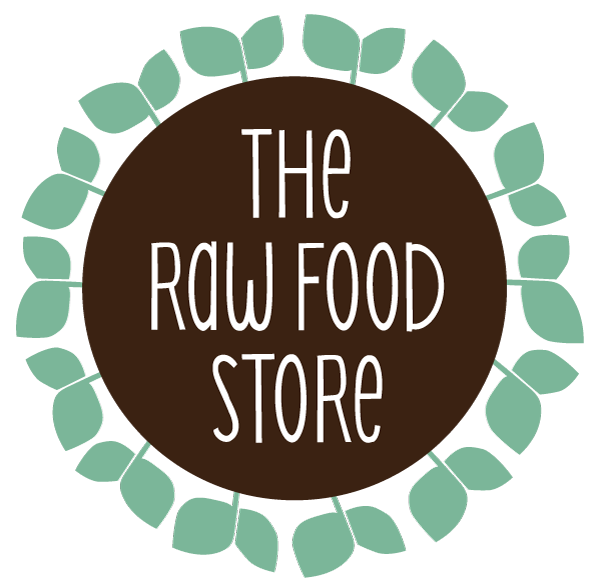

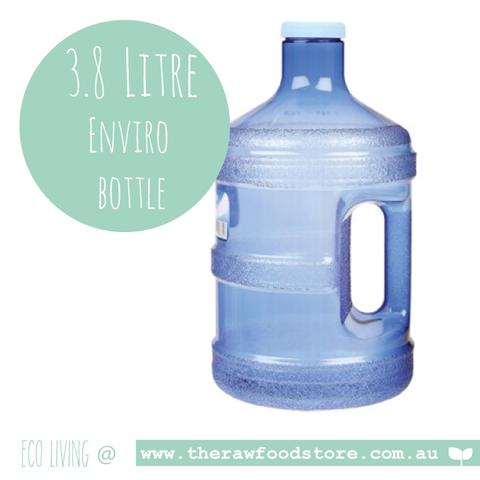
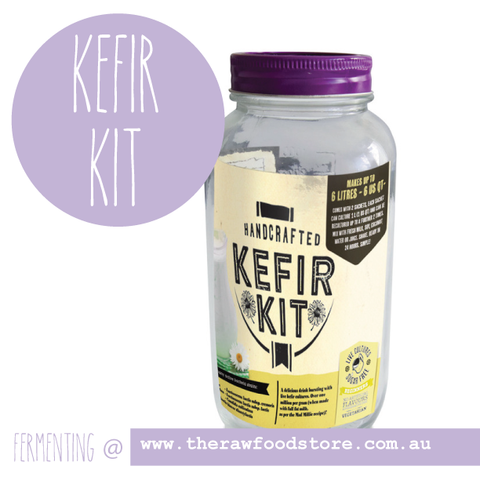
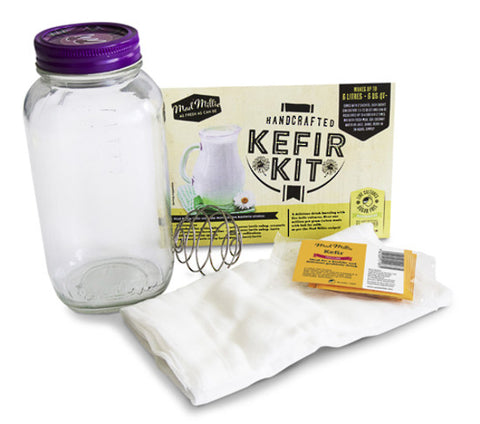
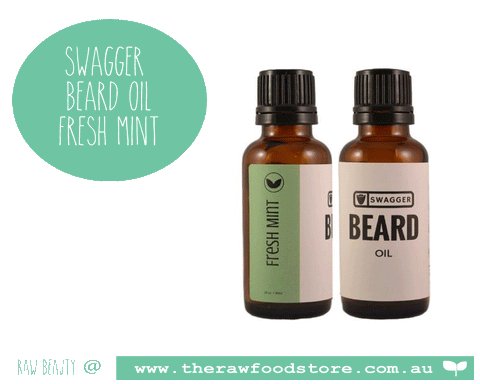



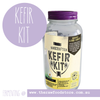





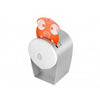

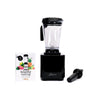
Comments